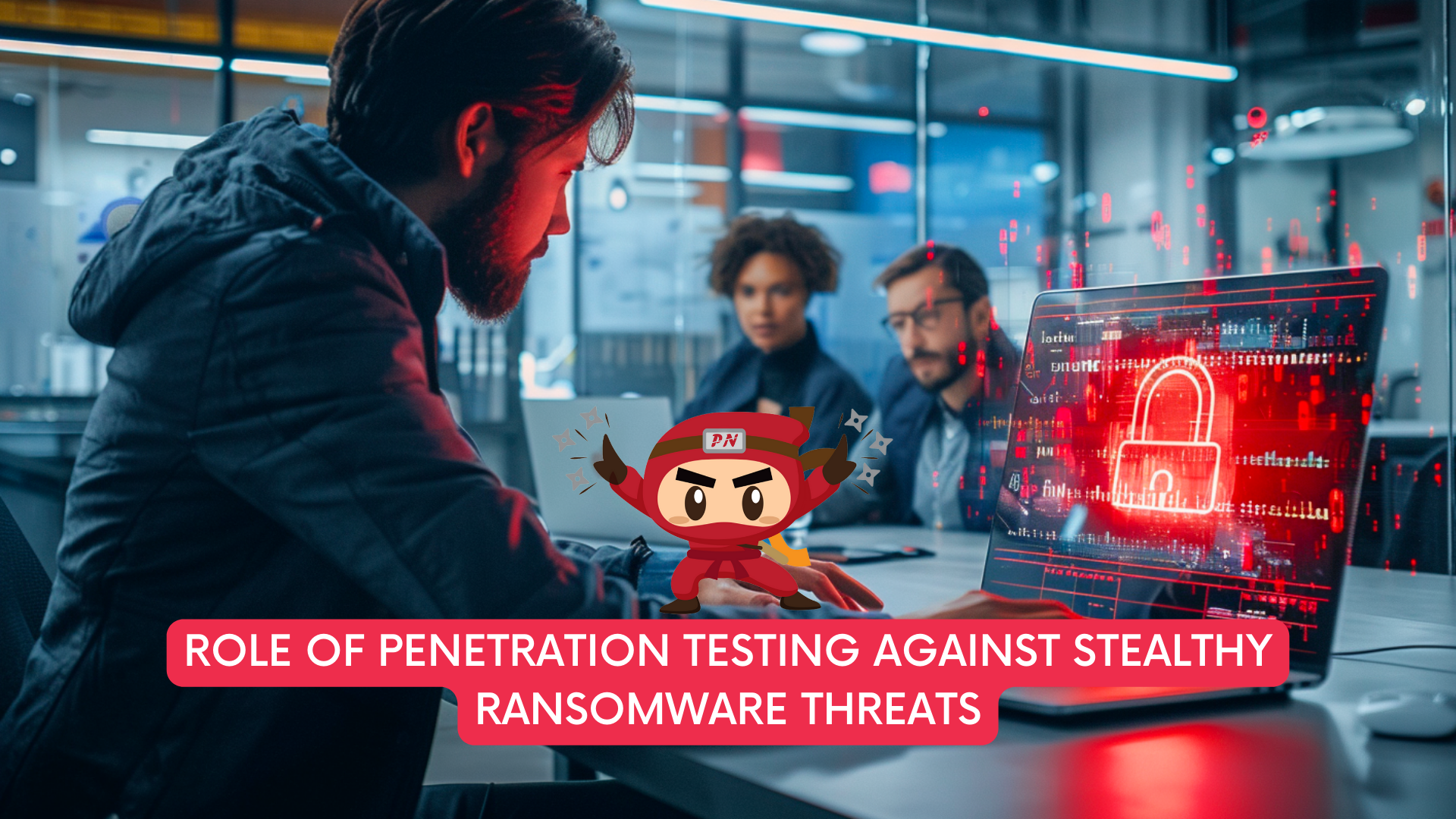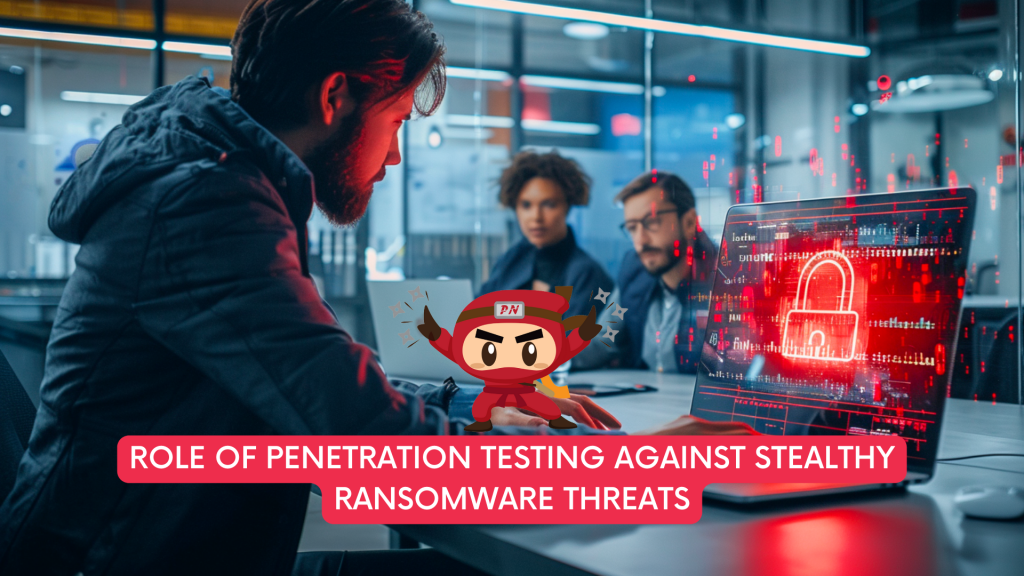KEEP IN TOUCH
Subscribe to our mailing list to get free tips on Data Protection and Cybersecurity updates weekly!







The specter of ransomware attacks casts a long shadow over organizations across diverse industries. As cybercriminals refine their tactics, traditional security measures often prove inadequate in thwarting their advances.
To fortify defenses against stealthy ransomware incursions, regular penetration testing emerges as an indispensable proactive measure. Without it, the persistent threat of undetected intrusions remains a constant peril, lurking in the digital shadows.
This article delves into the pivotal role of penetration testing in safeguarding against ransomware attacks, with a focus on its proactive identification of vulnerabilities and its role in compliance with regulatory frameworks like the Personal Data Protection Act (PDPA).
Ransomware assaults have evolved from rudimentary, widespread incursions to meticulously targeted and covert operations. Cybercriminals initiate these attacks by meticulously surveying their targets’ digital infrastructure and security protocols. Once vulnerabilities are pinpointed, they exploit them to infiltrate systems and deploy ransomware, encrypting vital data and demanding exorbitant ransoms for its release.

Penetration testing, or pen testing, replicates real-world cyber assaults to assess an organization’s system, network, and application security. By conducting methodical evaluations, security practitioners can uncover weaknesses and gauge the efficacy of existing security measures. Regular penetration testing stands as a bulwark against emerging cyber threats, including stealthy ransomware attacks.
A primary advantage of penetration testing lies in its ability to uncover vulnerabilities before malevolent actors exploit them. By emulating real attackers’ methodologies, penetration testers ferret out weaknesses that might otherwise elude detection. This proactive stance empowers organizations to rectify vulnerabilities and fortify defenses before falling prey to ransomware assaults.
For many organizations, compliance with regulatory mandates, such as the Personal Data Protection Act (PDPA), is non-negotiable. Penetration testing often features prominently in these frameworks as a requisite measure to safeguard sensitive data. Regular penetration tests enable organizations to demonstrate adherence to PDPA guidelines, mitigating the risk of data breaches and regulatory penalties.
Penetration testing transcends superficial security evaluations by delving deep into an organization’s digital infrastructure and applications. Testers employ an array of techniques—from network reconnaissance to application probing and social engineering—to uncover critical weaknesses ripe for exploitation. By identifying and prioritizing these vulnerabilities, organizations can allocate resources judiciously to bolster their defenses.
In addition to vulnerability identification, penetration testing aids in enhancing incident response preparedness. By simulating authentic cyber assaults, security teams can evaluate the efficacy of their response protocols. This hands-on experience enables organizations to refine their incident response strategies, ensuring prompt and effective mitigation of ransomware attacks and other security breaches.
Cyber threats evolve incessantly, necessitating a continuous fortification of defenses. Regular penetration testing should be viewed as an ongoing imperative rather than a one-off endeavor. By integrating penetration testing into their cybersecurity arsenal, organizations can stay ahead of emerging threats and minimize susceptibility to stealthy ransomware incursions.

In an era characterized by escalating cyber threats, safeguarding against ransomware attacks demands a proactive approach to cybersecurity. Regular penetration testing emerges as a cornerstone of this strategy, enabling organizations to detect and rectify vulnerabilities before they are exploited. Moreover, by embracing penetration testing as a proactive measure, organizations can bolster their compliance with regulatory frameworks like the PDPA, mitigate the risk of data breaches, and fortify their digital resilience against ransomware assaults. Ultimately, investing in regular penetration testing is an investment in the long-term security and viability of an organization’s digital infrastructure.
Your appointed DPO can work with you on your PDPA compliance, ensuring that there will be policies in place to make sure that the handling of personal data is PDPA compliant.
A Data Protection Officer (DPO) oversees data protection responsibilities and ensures that organisations comply with the Personal Data Protection Act (PDPA). Furthermore, every Organisation’s DPO should be able to curb any instances of PDPA noncompliance as it is the officer responsible for maintaining the positive posture of an organisation’s cybersecurity.
DPOs complement organisations’ efforts to ensure that the organisation’s methods of collecting personal data comply with the PDPA. It also ensures that policies are set in place to make sure that there will be no instances of data breaches in the future.
Don’t wait any longer to ensure your organisation is PDPA compliant. Take our free 3-minute PDPA Compliance Self-audit checklist now, the same “secret weapon” used by our clients to keep them on track. Upon completion, we will send you the results so you can take the necessary action to protect your customers’ data. Complete the free assessment checklist today and take the first step towards protecting your customers’ personal data.